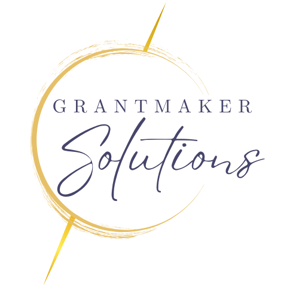Foundation Funding: A Grantee's Perspective
As federal funding for many critical programs continues to shrink, nonprofit organizations are increasingly turning to foundations to fill the gap. But for those on the receiving end of the grantmaking process, the journey can feel like navigating a maze without a map. Based on conversations with numerous grantees across the sector, this post shines a light on the real challenges organizations face when seeking and managing foundation support.
Dee Mueller | CEO & Founder
3/30/20253 min read


The Mysterious "Rule Book" of Foundation Funding
One of the most consistent frustrations expressed by nonprofit leaders is the seemingly opaque nature of foundation decision-making processes.
"Foundations do not play by the same rule book, and sometimes, it's anybody's guess what they are really looking to fund. Other times, we align 100% with their stated priorities but are passed over repeatedly. It's really difficult for us. Now that federal funding is going away for programs like ours, we're really looking to foundations for support, but feel like we don't know the secret formula." — Executive Director, Youth Development Organization
This sentiment echoes across organizations of all sizes and focus areas. Unlike government grants, which typically have standardized application processes and clearly defined evaluation criteria, foundation funding can feel subjective and unpredictable. Organizations report spending considerable resources crafting proposals that align with a foundation's stated priorities, only to be rejected without clear feedback on why they missed the mark.
The Hidden Variables
Grantees report several factors that seem to influence decisions but are rarely made explicit:
Relationship dynamics: Organizations with pre-existing connections to foundation staff or board members often appear to have an advantage, regardless of program alignment.
Unstated preferences: Some foundations may have priorities that aren't fully articulated in public materials, such as geographical focus areas within broader regions or specific approaches to problem-solving.
Timing misalignment: A perfectly aligned proposal might be rejected simply because it arrived during a strategic review period or when the foundation was shifting focus.
Capacity assessment: Foundations may make judgments about an organization's ability to execute based on factors not mentioned in guidelines, such as staff size or financial reserves.
The Reporting Conundrum
Even after securing foundation funding, grantees face significant challenges in the reporting process, which can undermine the very programs foundations aim to support.
"The hardest part for me is reporting. A couple of the foundations we receive grants from don't send reports until later in the award period, sometimes not until after we've completed the work and spent the funds. That's a really difficult time to find out that we were doing the work we promised, but collecting the wrong data. An example of this is a grant we received to work with victims of a certain crime-type. We collected their data, but according to the report which we received 11 months into the award period, we were required to ask each of our program participants if they had any prior victimization experience - even if they were just on our meals program. This put us in the position of having to put 3 of our team of their regular duties so they could track down everyone we had worked with in the past year to ask this one question. It's a terrifying feeling to think you might be out of compliance after you've spent the award money - not because you didn't provide the right services, but because you didn't ask the right questions." — Program Coordinator, Community Health Initiative
This mid-stream shifting of evaluation metrics creates several problems:
Retroactive data collection: Organizations scramble to gather information they weren't tracking, often leading to low-quality data or strained relationships with program participants.
Resource diversion: Staff time is redirected from program delivery to emergency data collection and reporting.
Missed learning opportunities: When evaluation frameworks are introduced late, organizations lose the chance to use those metrics for program improvement throughout the grant period.
Reporting inconsistency: Organizations juggling multiple foundation grants must maintain parallel tracking systems to satisfy different funders' requirements.
The Path Forward: Building More Effective Partnerships
While these challenges are significant, they are not insurmountable. Based on successful foundation-grantee relationships, several practices emerge that could improve the experience for all parties:
For Foundations to Consider:
Transparency in decision-making: Clearly communicating not just what you fund, but how decisions are made and what makes proposals stand out.
Relationship-building beyond transactions: Creating opportunities for dialogue with potential grantees before they apply.
Evaluation clarity from day one: Providing reporting templates and data requirements at the time of grant approval.
Feedback loops: Offering constructive feedback to unsuccessful applicants and being open to grantee input on reporting processes.
For Nonprofits to Consider:
Due diligence on foundation fit: Researching past grants and, when possible, speaking with current grantees before investing in applications.
Proactive communication: Asking specific questions about evaluation expectations early in the relationship.
Collaborative proposal development: Inviting foundation input during the concept development phase when possible.
Honest capacity conversations: Being transparent about data collection capabilities and negotiating realistic reporting parameters.
Conclusion
As government funding becomes less reliable for many critical programs, the relationship between foundations and nonprofits becomes increasingly important. By acknowledging the challenges grantees face and working together to create more transparent, consistent, and mutually beneficial processes, both foundations and the organizations they support can maximize their impact on the communities they serve.
The most successful foundation-nonprofit relationships are true partnerships characterized by clear communication, mutual respect, and a shared commitment to learning. By moving in this direction, we can build a more effective philanthropic ecosystem that benefits everyone involved—especially the communities and causes at the heart of our work.
Looking to strengthen your foundation's grantmaking approach? Grantmaker Solutions offers discreet, customized solutions that drive grantee success for maximum impact philanthropy. www.grantmakersolutions.com
Contact Us
MAXIMUM IMPACT PHILANTHROPY
connect@grantmakersolutions.com
(515) 236-6829
© 2025. All rights reserved.


